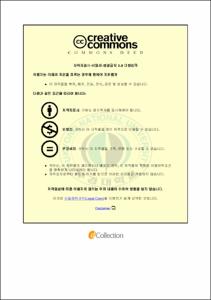2007 개정 교육과정 중학교 영어 교과서 분석
- Abstract
- The primary purpose of this study was to discover prominent features within the content of middle school English textbooks based on the 2007 Revised National Curriculum, and thereby to draw several implications with respect to the improvement of the middle school English textbooks for the next curriculum revision.
In order to achieve this purpose, fifteen middle school English textbooks produced by five publishers most popular across Busan were selected and analyzed. The whole contents in the textbooks were categorized into nine items of three domains including lesson activities dealing with four language skills, communicative language function, and linguistic materials & illustrations. The contents accounting for higher or lower frequency within each item discovered through collected data were further analyzed for results, which are as follows.
First, among the lesson activities for receptive language skills, activities for comprehension or those engaged by only one person accounted for the highest portion. Second, the activities for productive skills followed a certain teaching model: PPP (presentation-practice-production) model. Third, for lesson contents for communicative language function and linguistic materials, the textbooks of higher grades consisted of gradually more abstract and complex contents requiring higher levels of mental process. Finally, the frequency of illustrations used in the textbooks appeared to depend on learners’ interest and the type of lesson activity where an illustration is used.
The results above suggest pedagogical implications, which are as follows. First, further research is needed regarding more diverse lesson patterns to modify the current order for four language skills. Second, more lesson activities are required facilitating learners’ interaction. Third, integrated lesson activities among/between the language skills should be extended. Fourth, the portion of lesson activities for productive skills following the PPP model are recommended to be replaced by other activities fostering learners’ creativity. Finally, further research is suggested in terms of which amount of contents requiring higher level for each grade is appropriate.
- Issued Date
- 2013
- Awarded Date
- 2013. 8
- Type
- Dissertation
- Publisher
- 부경대학교
- Affiliation
- 교육대학원
- Department
- 교육대학원 영어교육전공
- Advisor
- 박매란
- Table Of Contents
- Ⅰ. 서론 ································································· 1
1. 연구의 필요성 및 목적 ················································· 1
2. 연구 과제 ·································································· 2
3. 연구의 제한점 ···························································· 3
Ⅱ. 이론적 배경 ····················································· 4
1. 영어 교재의 의미 ························································ 4
가. 영어 교재의 정의 ······················································· 4
나. 영어 교과서의 장·단점 ················································· 6
2. 영어 교과서 평가 ························································ 7
3. 선행 연구 ·································································· 8
Ⅲ. 연구 방법 ······················································ 11
1. 분석 대상 ································································ 11
가. 분석 대상 교과서 ····················································· 11
나. 분석 대상 교과서의 구성 체계 ······································ 12
2. 분석 내용과 분석 영역 ················································ 14
가. 분석 내용 ······························································ 14
나. 분석 영역 ······························································· 15
3. 분석 기준 ································································ 16
가. 언어 기능 ······························································· 17
(1) 듣기 활동 ···························································· 17
(2) 말하기 활동 ························································· 18
(3) 읽기 활동 ···························································· 18
(4) 쓰기 활동 ···························································· 20
나. 의사소통 기능 ························································· 21
(1) 의사소통 기능 ······················································· 21
(2) 언어 형식 ···························································· 22
다. 언어 재료 및 삽화 ···················································· 22
(1) 소재 ·································································· 22
(2) 어휘 ·································································· 23
(가) 신출 어휘 수 분석 ·············································· 23
(나) 신출 어휘 의미 분석 ··········································· 23
(3) 삽화 ·································································· 24
Ⅳ. 분석 결과 및 논의 ··········································· 25
1. 언어 기능 분석 ························································· 25
가. 듣기 활동 분석 ························································ 25
나. 말하기 활동 분석 ····················································· 28
다. 읽기 활동 분석 ························································ 30
라. 쓰기 활동 분석 ························································ 33
2. 의사소통 활동 분석 ····················································· 35
가. 의사소통 기능 분석 ··················································· 36
나. 언어 형식 활동 분석 ·················································· 37
3. 언어 재료 및 삽화 분석 ·············································· 39
가. 소재 분석 ······························································· 39
나. 어휘 분석 ······························································· 41
(1) 신출 어휘 수 분석 ·················································· 41
(2) 신출 어휘 의미 분석 ··············································· 43
다. 삽화 분석 ······························································· 46
4. 결과 요약 ································································· 48
가. 언어 기능 분석 요약 ·················································· 48
나. 의사소통 활동 분석 요약 ············································· 49
다. 언어 재료 및 삽화 분석 요약 ········································ 50
Ⅴ. 결론 및 제언 ·················································· 52
1. 결론 ········································································ 52
2. 제언 ········································································ 54
참고 문헌 ···························································· 57
- Degree
- Master
- Files in This Item:
-
-
Download
 2007 개정 교육과정 중학교 영어 교과서 분석.pdf
기타 데이터 / 57.53 MB / Adobe PDF
2007 개정 교육과정 중학교 영어 교과서 분석.pdf
기타 데이터 / 57.53 MB / Adobe PDF
-
Items in Repository are protected by copyright, with all rights reserved, unless otherwise indicated.